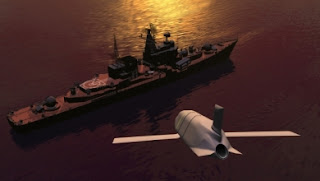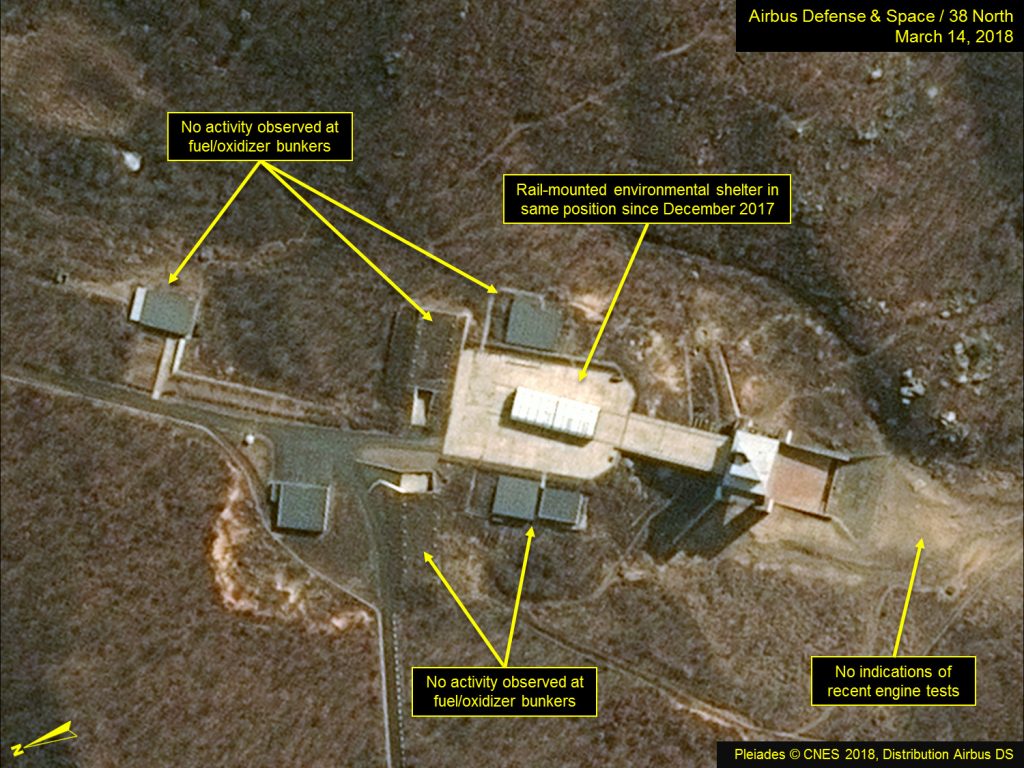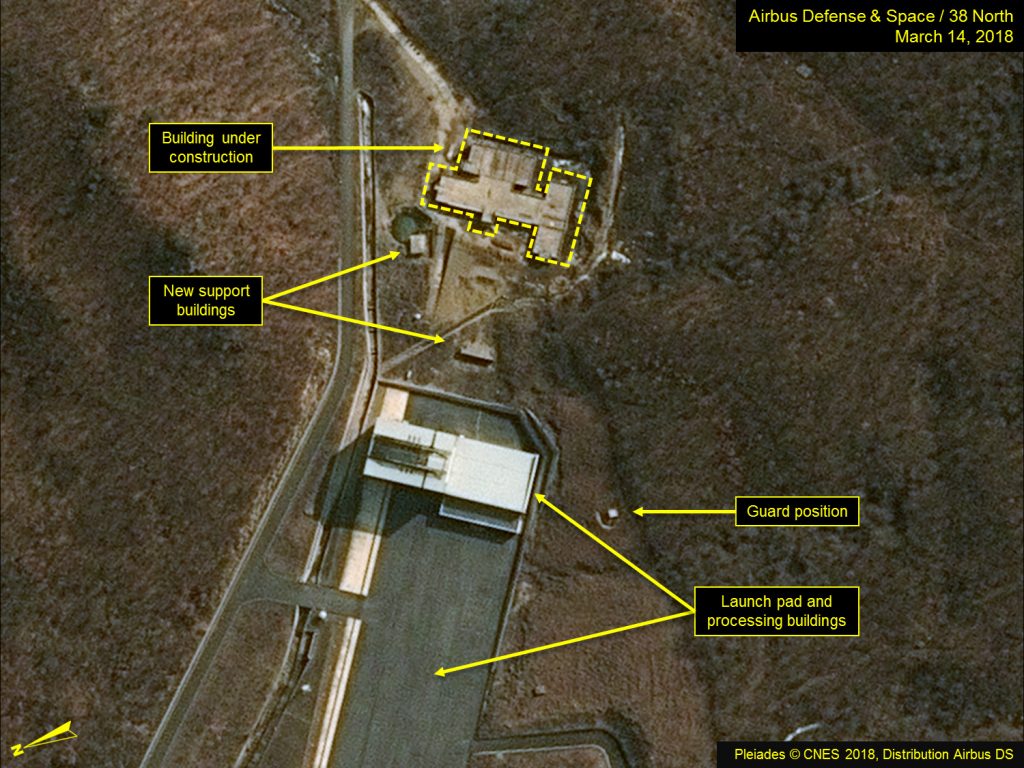USA
Army, Struggling to Get Technology in Soldiers’ Hands, Tries the Unconventional
Soldiers training at Fort Sill, Okla., last month. The Army’s planned Futures Command will consult directly with troops there about how to update artillery pieces to improve speed and range. Tamir Kalifa for The New York Times
WASHINGTON — The platoon of Army Special Operations soldiers was on a routine night patrol in eastern Afghanistan when one of them suddenly opened fire on what looked to the others to be a bush.
The bush, it turned out, had been obscuring a militant fighter. He was detectable only to the one platoon member wearing prototype night vision goggles that could detect heat signatures — a happenstance that Army officials say probably saved many lives.
That incident took place in 2015. Three years later, soldiers in the field still do not have the new night vision goggles, and that is just one example of a process that can take a decade to get new weapons from the lab to the hands of troops. Worried about that lag, the Army is creating a new and decidedly unconventional department to address it: the Futures Command...
First Next-Gen Combat Vehicle and robotic wingman prototypes to emerge in 2020:
WASHINGTON — The first stab at building prototypes for what the U.S. Army intends to be an innovative, leap-ahead Next-Generation Combat Vehicle and its robotic wingman will be ready for soldier evaluations in fiscal 2020, according to the service’s new cross-functional team lead for NGCV.
Subsequently, the Army will rapidly produce follow-on prototypes in FY22 and again in FY24, each taking lessons learned from the previous prototypes and refining capabilities. Soldiers will have the chance to heavily evaluate the prototypes at every stage.
Brig. Gen. David Lesperance is in charge of mapping the Army’s plan to develop and field an NGCV, one of the top six modernization priorities laid out by the service. Cross-functional teams, or CFT, were recently formed for each of the priorities and will reside within the Army’s new Futures Command, expected to stand up in the summer.
The CFT has decided to focus on two lines of effort, Lesperance told a small group of reporters in a March 15 phone call. The first line is to build a robotic combat vehicle, “which is an optimally unmanned close combat platform;” the second is the NGCV, an optionally manned vehicle that will get soldiers to a point of lethal advantage in close combat, he said...
Lockheed Ship-Killer Could Show Path To Hypersonic Missiles
Lockheed Martin’s Long Range Anti-Ship Missile (Lrasm) has conducted its sixth consecutive successful test flight as the Darpa-developed weapon heads toward initial operational capability by year’s end.
In the end-to-end test, the production-configuration missile was loaded onto a U.S. Air Force Rockwell B-1B at Dyess AFB in Texas and launched over the sea range off Point Mugu, California, to find and hit its maritime target.
Transition of Lrasm from the Pentagon’s advanced research agency to the U.S. Navy to meet an urgent operational requirement is being viewed as a potential model for fielding hypersonic weapons now under development by Darpa and the Air Force Research Laboratory (AFRL).
“The transition of Lrasm from Darpa to the Navy has worked well and is a model we could follow,” says Frank St. John, executive vice president of Lockheed Martin Missiles and Fire Control (MFC), which developed the anti-ship missile.
MFC is already working with Lockheed’s Skunk Works, which is under contract to Darpa and AFRL to begin flight testing two different air-launched high-speed missiles in 2019; the unpowered Tactical Boost Glide (TBG) and scramjet-powered Hypersonic Air-breathing Weapon Concept (HAWC). Lockheed is the sole contractor on TBG, while Raytheon is also working on HAWC.
MFC is providing boosters for the Skunk Works missiles and will perform aircraft integration, sensor and testing work once they transition from demonstrations to tactical missile programs. “We have also invited our production folks in, so they can build limited quantities and it will not be a do-over” when the missiles enter production, he says.
“Skunk Works is the lead in technology for Mach 5-plus. MFC is [a] partner with them, and the transition should go pretty smoothly over the next couple of years,” St. John says...
AFRICA
China to build $31.6 million ECOWAS headquarters
The new headquarters for the Economic Community of West African States (ECOWAS) will be built by China, the group confirmed in a press statement on Wednesday March 14, 2018.
The political bloc and China have signed a Memorandum of Understanding (MOU) for the project that is expected to cost $31.6 million.
“The President of the ECOWAS Commission, Mr. Jean-Claude Brou and the Ambassador of China to Nigeria and ECOWAS, Mr. Zhou Pingjian signed for both parties in a bilateral meeting held at the ECOWAS Commission headquarters, Abuja,” the statement read.
The idea of a new headquarters was initiated in 2012 but action on the said project takes immediate effect from the date of the signing of the deal.
The project is expected to cater for a facility comprising offices and conference complex building, as well as road facilities, electrical equipment, parking lots and security posts within the proposed site of the project...
ASIA
China's Tech Giants Are Racing the West Into Southeast Asia
Highlights
Chinese tech and internet giants have charged into the dynamic Southeast Asian market as they seek to globalize and challenge U.S. and Western dominance overseas.
Southeast Asia is neither a purely Western nor a purely Chinese market, making it a level playing field and one that China will not easily give up.
The region's growing e-commerce, digital economies and smartphone penetration rate will drive interest there as it undergoes a substantial economic transition...
U.S., India: Forging a Strategic Defense Partnership
India is exploring a deepening defense partnership with the United State as it seeks to balance against an increasingly assertive China in the Indo-Pacific region. On March 20, Indian National Security Adviser Ajit Doval arrived in the United States to meet with his American counterpart, H.R. McMaster, along with incoming U.S. Secretary of State Michael Pompeo and incoming CIA Director Gina Haspel. Doval's visit aims to lay the groundwork for a first-ever dialogue between Indian and U.S. foreign and defense ministers, which was originally scheduled for April 18 but which has since been delayed pending Pompeo's confirmation...
CENTRAL/LATIN AMERICA
Brazil to launch canal to drought-stricken northeast this year: minister
A general view during the opening ceremony of the 8th World Water Forum in Brasilia, Brazil March 19, 2018. REUTERS/Ueslei Marcelino
The canal serving Ceara and Rio Grande do Norte is the second such waterway in a government project to redirect water from the Sao Francisco river to the northeastern region to relieve a multi-year drought.
The first canal went into operation last year and 1 million people are already receiving water in Paraiba state, said Helder Barbalho, who heads the Ministry of National Integration in charge of the project.
In Paraiba, there is already a rebound in agriculture and other areas of the economy following the completion, Barbalho told reporters at the World Water Forum, which opened on Monday in Brasilia.
“We’re talking about an extraordinary recovery of the driest region in Brazil,” he said, without giving details on the economic recovery...
EUROPE
EU: New Tech Taxes Will Drive Divisive Decisions
After nearly a year of rhetoric and planning, the European Union is preparing to take action on taxing technology companies. According to media reports, the European Commission is working on a plan to levy a 3 percent tax on advertising revenue, subscription fees and money generated from selling user data. The tax would apply to companies with a worldwide turnover of at least 750 million euros ($921.4 million) and 50 million euros in annual taxable revenues in the European Union. EU officials expect to raise about 5 billion euros a year through this tax, which is expected to affect around 100 companies. The proposal is set to be unveiled next week, and opposition to the proposal will likely follow soon after.
AFGHANISTAN
NOTHING SIGNIFICANT TO REPORT
CHINA
NOTHING SIGNIFICANT TO REPORT
IRAN
EU: The Iran Nuclear Deal Looks for Life Support
The European Union is still working on its response to U.S. President Donald Trump's promise to scuttle the Iran nuclear deal unless more is done to counter Iran's destabilizing activities in the Middle East. According to media reports, the EU3 powers — France, Germany and the United Kingdom — are working on a proposal to meet Trump's demands through new sanctions. EU foreign policy chief Federica Mogherini said March 19 that there was no formal EU proposal in place for such sanctions, but she stopped short of denying that discussions over such a proposal were occurring. In addition, Mogherini urged adherence to the bloc's consistent position that the Iran nuclear deal, formally known as the Joint Comprehensive Plan of Action (JCPOA), must succeed before the bloc will agree to further action against Iran...
IRAQ
NOTHING SIGNIFICANT TO REPORT
ISRAEL
NOTHING SIGNIFICANT TO REPORT
KOREAN PENNSULEA
South Korea may buy more Apache helicopters to lead the fight across DMZ:
SEOUL, South Korea — The South Korean military plans to buy more Apache heavy-attack helicopters to lead the deployment across enemy lines should conflict erupt on the Korean Peninsula, according to defense officials.
Ordered by Defense Minister Song Young-moo, the Joint Chiefs of Staff is expected to issue requirements for the procurement next week, an official at the Ministry of National Defense said.
It’s unknown exactly how many more Apaches the government wants, but informed sources tell Defense News the number could reach as much as 40.
“The South Korean military has been shifting the concept of its warfare strategy to an offensive one,” an official said. “To that end, the military leadership decided to put a priority more on helicopter assets than tanks.”
Because of that shift, the military may cancel plans to acquire some 300 more K2 Black Panther main battle tanks, according to the official.
The South Korean military has long established a counteroffensive strategy in which South Korean armed forces conduct a full-scale counterattack only after U.S. augmentation troops arrive on the peninsula.
Under the envisaged plan, the South Korean military aims to occupy North Korea’s capital Pyongyang two to three weeks after the outbreak of war...
South Korea Signs Deal for 90 Bunker-Buster Cruise Missiles
South Korea has concluded a contract for 90 German-built Taurus KEPD 350 long-range precision-guided cruise missiles, the country’s Defense Acquisition Program Administration (DAPA) revealed on March 12. “The contract was signed in late February,” Kang Hwan-seok, a DAPA spokesperson, told reporters this Monday, according to Yonhap news agency.
The 90 additional Taurus KEPD 350 air-to-surface missiles will expand the Republic of Korea Air Force’s (ROKAF) existing stockpile of 170-180 missiles. The ROKAF began receiving its first Taurus KEPD 350s, intended for the service’s fleet of F-15K Slam Eagle multirole fighter jets, in October 2016.The cost per missile is estimated at around $1.2 million.
Powered by a turbofan engine, the Taurus cruise missile can reach a top speed of up to March 0.9 and has estimated operational range of around 500 kilometers (300 miles). It is armed with a 500-kilogram (1,100-pound) high explosive warhead and is primarily deployed as a bunker buster. It can target hardened North Korean command and control facilities as well as missile launch sites...
Quick Takes: Sohae Satellite Launching Station Remains Quiet
Commercial satellite imagery from March 14 of the Sohae Satellite Launching Station, North Korea’s main space launch facility, indicates little activity around the facility as a whole and shows no indications of a recent or forthcoming engine test or preparations for a satellite launch. At the vertical engine test stand, the rail-mounted environmental shelter remains in the same position it has been since December 2017. At the launch pad, construction of a new building immediately to the south continues at a very slow pace, although its purpose is still unknown. At the former satellite control building, a monument has been constructed and is surrounded by a new orchard...
RUSSIA
Russian ex-spy's poisoning in UK believed from nerve agent in car vents: Sources
The Russian ex-spy who along with his daughter was poisoned by a nerve agent in the U.K. may have been exposed to it through his car's ventilation system, sources told ABC News.
Former Russian spy Sergey Skripal and his daughter, Yulia, were found slumped over, unconscious on a park bench earlier this month in the southern English town of Salisbury. The U.K. has accused Russia of bearing responsibility for the March 4 attack, which British officials say involved a military-grade nerve agent of a type developed secretly by Russia...
Russia Test Fires New Kh-47M2 Kinzhal Hypersonic Missile
First “Kinzhal” Fired from MiG-31 in Southwest Russia Hits Target According to Russians. But it’s a modified Iskander SRBM.
The Russian Aerospace Forces have conducted the first successful test firing of the air-launched Kinzhal (Dagger) hypersonic missile according to state sponsored media outlets.
The missile, supposedly named Kh-47M2 and referred to as the “Kinzhal”, was fired from a modified MiG-31BM (NATO reporting name “Foxhound”) over Southwest Russia. A report published on Facebook by Russian Deputy Prime Minister Dmitry Rogozin said the “unique” MiG-31 that fired the missile had been “modernized”. Rogozin did not specify what modifications or “modernized” meant...
...The official news release from the Russian Aerospace Forces read in part, “MiG-31 jet of the Russian Aerospace Forces conducted a test launch of hypersonic aviation and missile system Kinzhal in a set district. The launch was successful, the hypersonic missile hit the designated target at the field...”
Kinzhal is claimed to be a strategic air-to-surface strike missile. The missile is claimed to have maneuverable flight characteristics not typically seen in hypersonic, solid fuel missiles. Observers of Russian missile programs have voiced skepticism about Russia’ performance claims however. According to Russians and reference sources the Kinzhal missile has a top speed of Mach 10 and maintains some ability to maneuver throughout its performance envelope including at hypersonic speed. If accurate, these capabilities could make the Kinzhal difficult to intercept by anti-missile systems. The missile is reported to have a range of 1,200 miles (approximately 2,000 kilometers). This, added to the reported 1,860-mile unrefueled range of the MiG-31BM long range, supersonic interceptor, gives the Kinzhal potentially intercontinental strike capability. The missile is also reported to be nuclear-capable and able to hit ground as well as naval targets...
MIDDLE EAST GENERAL
NOTHING SIGNIFICANT TO REPORT
CYBER ISSUES
NSA Pick Will Develop Cyber Retaliation Plans But Don’t Expect Government to Use Them
Lawmakers pressed President Donald Trump’s pick to lead the National Security Agency over the government’s failure to deter Russian cyber aggression Thursday at the same time the Treasury Department imposed the broadest sanctions to date against Russian government hackers.
The timing underscored two points made frequently by government cyber officials and by their critics outside government. First, the best response to a cyber strike often isn’t a cyber counterstrike. Second, those non-cyber responses, though they keep piling up, still aren’t doing the trick.
Thursday’s sanctions target five Russian entities, including intelligence services and social troll creator, the Internet Research Agency, as well as 19 individuals, many of whom were previously indicted by Special Counsel Robert Mueller...
TERRORISM
NOTHING SIGNIFICANT TO REPORT
MISC
Will Spirit AeroSystems Have Role In Supersonic Bizjet?
WICHITA—Spirit AeroSystems, a provider of large aerostructures to Boeing and Airbus, has been in talks with Aerion and Boom about their supersonic aircraft projects and likes what it sees.
While volume building structures for the speedy supersonic aircraft wouldn’t be as large as its commercial airliner business, Spirit says it is interested in the work.
"We’ve talked to Aerion and Boom. I’m very interested in both, particularly Aerion, because they’re probably a little bit further ahead," Tom Gentile, Spirit AeroSystems CEO, said in a recent interview with Aviation Week Network editors. "They’re at the cutting edge of technology, so they require the most sophisticated structures. That’s a great challenge and a learning opportunity for us."
Spirit, Boeing’s largest supplier, is looking at small, developing projects to see how they could grow into bigger opportunities, Gentile said.
He is open to adding work on business aircraft projects, which are smaller in scale with lower rates and volumes.
"We talk a lot with Textron Aviation," Gentile said...
Police Work, Politics and World Affairs, Football and the ongoing search for great Scotch Whiskey!
Wednesday, March 21, 2018
What's going on in the World Today 180321
HYPERLINKS MAY REQUIRE AN EMAIL:
Labels:
Afghanistan,
Africa,
Asia,
Cyber/Computer Issues,
Europe,
Intelligence,
Iran,
Iraq,
Israel,
Mexico,
Middle East,
Russia,
Syria,
Terrorism,
USA
Subscribe to:
Post Comments (Atom)





No comments:
Post a Comment